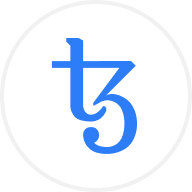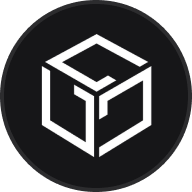Sandbox é um mundo virtual descentralizado na blockchain Ethereum onde você pode criar, compartilhar e monetizar ativos e jogos voxel. O Sandbox é umplay-to-earn (P2E) baseada em Ethereum cujos criadores pretendem criar uma experiência do metaverso sem uma autoridade centralizada.
Os jogos tradicionais de construção de mundos virtuais baseados em voxel, como o Minecraft, são jogos centralizados onde os usuários não têm propriedade sobre suas criações ou a jogabilidade. O Sandbox resolve esse problema permitindo que os jogadores criem e monetizem experiências de jogo na blockchain Ethereum.
Ao contrário dos jogos tradicionais, onde os ativos do jogo existem no servidor da respectiva empresa, cada objeto no metaverso Sandbox é um token não fungível (NFT) livremente negociável. na blockchain Ethereum, dando ao usuário a propriedade completa do item do jogo. Os criadores do The Sandbox têm, portanto, a verdadeira propriedade de suas criações por meio desses NFTs. Além disso, eles são recompensados por sua participação com SAND, o token utilitário da rede.
Como o ecossistema Sandbox é alimentado pela blockchain Ethereum, todas as execuções de contratos inteligentes, transferências NFT, transações de criptomoedas e registros -manutenção são facilitadas pela rede Ethereum. Isso é feito por meio de três produtos principais que alimentam essas funções para ajudar os usuários a criar seu mundo virtual. Eles são VoxEdit, Marketplace e Game Maker.
VoxEdit é um pacote de modelagem voxel gratuito que permite aos usuários criar e animar objetos 3D. Esses objetos podem então ser exportados para o mercado Sandbox como ATIVOS no jogo. O Marketplace é uma loja baseada na web que conecta compradores e vendedores que negociam NFTs de ativos. Ele permite que os usuários carreguem, publiquem e vendam seus ATIVOS como tokens ERC-721 e ERC-1155.
Por último, o Game Maker permite que os usuários adicionem mecânicas de jogo aos seus ativos voxel por meio de nós de script visual, permitindo que os usuários criem uma experiência de jogo envolvente no terreno adquirido de LAND. Os usuários também podem usar o Game Maker para colocar ativos voxel em seu Sandbox LAND. LAND também pode hospedar concursos e eventos, monetizar ativos, jogar e criar jogos, votar na governança do metaverso Sandbox e stake tokens SAND. Há um máximo de 166.464 TERRAS disponíveis.
SAND: o token nativo do Sandbox
SAND é um token ERC-20 usado para transações dentro da plataforma, entre outras coisas. Os jogadores gastam SAND para acessar e jogar, comprar equipamentos e personalizar seus avatares. SAND também pode ser usado para comprar ativos e TERRENOS.
Outro token nativo do metaverso Sandbox são os tokens ASSET, que podem ser comprados e vendidos com SAND. Os usuários podem criar e vender tokens ASSET no Marketplace como NFTs que representam itens do jogo.
SAND também funciona como um símbolo de governança. Os detentores podem votar em decisões sobre o futuro do The Sandbox por meio da organização autônoma descentralizada (DAO).
SAND também pode ser alocado em stake, o que permite obter receitas passivas. Além disso, os tokens SAND apostados também podem gerar rendimento na forma de joias e catalisadores valiosos, que são usados para a criação de ATIVOS.
Preço SAND e Tokenomics
SAND é um token deflacionário com uma oferta finita de 3 bilhões. Do fornecimento total, 360 milhões de SAND foram alocados para a venda da plataforma de lançamento, 17,8% foram mantidos para a rodada de venda de sementes e 4% dos tokens SAND foram distribuídos durante uma venda estratégica em julho de 2020.
Do fornecimento restante de SAND, 12% dos tokens foram doados à Sandbox Foundation, 25,82% foram alocados para reservas, 19% dos tokens SAND foram distribuídos aos fundadores e equipe e 10% dos tokens SAND foram pagos aos consultores .
A venda inicial e a alocação de venda estratégica têm um limite de 12 meses, após o qual 20% dos tokens são desbloqueados a cada seis meses.
A receita gerada pelo The Sandbox é distribuída entre quatro partes interessadas para garantir suporte contínuo ao seu ecossistema de jogadores e criadores. Esses tokens são distribuídos para a pool de fundação, a pool de staking, a tesouraria da empresa e a reserva da empresa.
Sobre os fundadores
O projeto Sandbox foi fundado em 2012 por Sébastien Borget, agora COO da Sandbox, e CEO Arthur Madrid.
Construído pela Pixowl, uma empresa de desenvolvimento de jogos para dispositivos móveis de São Francisco, o Sandbox foi inicialmente lançado como um jogo 2D para dispositivos móveis, que foi baixado por mais de 40 milhões de pessoas.
Em janeiro de 2018, a Sandbox decidiu desenvolver uma versão 3D do jogo no Ethereum. Além disso, a equipe do Sandbox queria fornecer aos jogadores 100% de propriedade sobre os itens do jogo e a capacidade de monetizar sua jogabilidade e ativos. Mais tarde, em agosto de 2018, a Animoca Brands, desenvolvedora líder de jogos blockchain, adquiriu a Pixowl.
Para financiar sua visão, a Sandbox arrecadou US$ 6,8 milhões em três vendas de tokens em 2019 e 2020. Além disso, a empresa anunciou uma doação de US$ 2 milhões para criadores criarem e publicarem arte voxel na plataforma Sandbox.

















